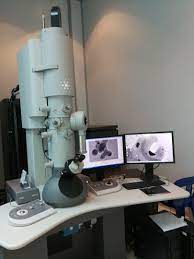Researchers in the country would soon have access to four Cryogenic-Electron microscopy (Cryo-EM) facilities paving the way towards establishment of leadership in structural biology, enzymology, and drug discovery to combat new and emerging diseases.
Cryo-EM has revolutionized structural investigations of macromolecules in recent times. It is a testimonial for a revolutionary technology for structural biologists, chemical biologists, and ligand discovery, which has gained a clear edge over contemporary x-ray crystallography. In light of these advancements, cryo-electron microscopy technique was recognized with the Nobel Prize for the high-resolution structure determination of biomolecules in solution (2017). The revolution in resolution resulted in atomic-level understanding of the Zika virus surface proteins, thus aiding structure-based drug discovery, deciphering of structure of hard-to-crystallize membrane proteins and other macromolecular complexes.
The National Facilities supported by the Science & Engineering Research Board (SERB), an institution under the Department of Science & Technology (DST), would help explore Macromolecular Structures and Complexes†and create research knowledge base and skills for cryo-EM research in India to establish leadership in structural biology, enzymology, ligand/drug discovery.
The establishment of these facilities in all directions of the country–Indian Institute of Technology, Chennai; Indian Institute of Technology, Bombay; Indian Institute of Technology, Kanpur; and Bose Institute, Kolkata would help in scaling up cryo-EM based structural biology research in different corners across the country. These centers are designated as SERB National Facility for Cryo-Electron Microscopy and will work on the identified thrust areas. They will be accessible to all researchers.
Housed with 200kV machines have added advantages like lesser maintenance and can help generate human resources through training, which can also help sustain the facility for longer duration. Each Cryo-EM facility costs about Rs. 28.5 crore for a period of five years and an amount of Rs. 114 crores for research in the critically important research areas.
While IIT Chennai will focus on nano-biointerfaces (e.g. materials–microbes, materials–human tissue), IIT Bombay will execute research on ribosome translation and its implication in disease and antibiotic resistance, neurodegenerative disorders and tackle problems to address solutions to cancer, membrane structure, composition, dynamics & transport. IIT Kanpur will conduct research focused on macromolecular structures and drug discovery with a specific focus on membrane proteins, and Bose Institute, Kolkata will focus on transforming the structure-guided drug discovery and therapeutics research for communicable and non-communicable diseases, allosteric drugs, transcription, and epigenetics.
The first national cryo-EM facility was established at National Centre for Biological Sciences (NCBS) in 2017 and then subsequently in IISc, Bangaluru, and RCB Faridabad. However, it was felt that the existing cryo-EM research facilities in the country are not adequate to leave a mark at the global stage. Historically, Indian scientists have contributed significantly in the area of Prof. GN Ramachandran and Dr. G. Kartha made a remarkable contribution to structural biology, biological, chemical, physical, computational, and theoretical crystallography and materials crystallography. Given significant advances in cryo-EM of large structures, SERB has taken the responsibility that concerted funding should be provided to establish leadership in this area to enable and empower Indian researchers to lead from the front.






Comment here